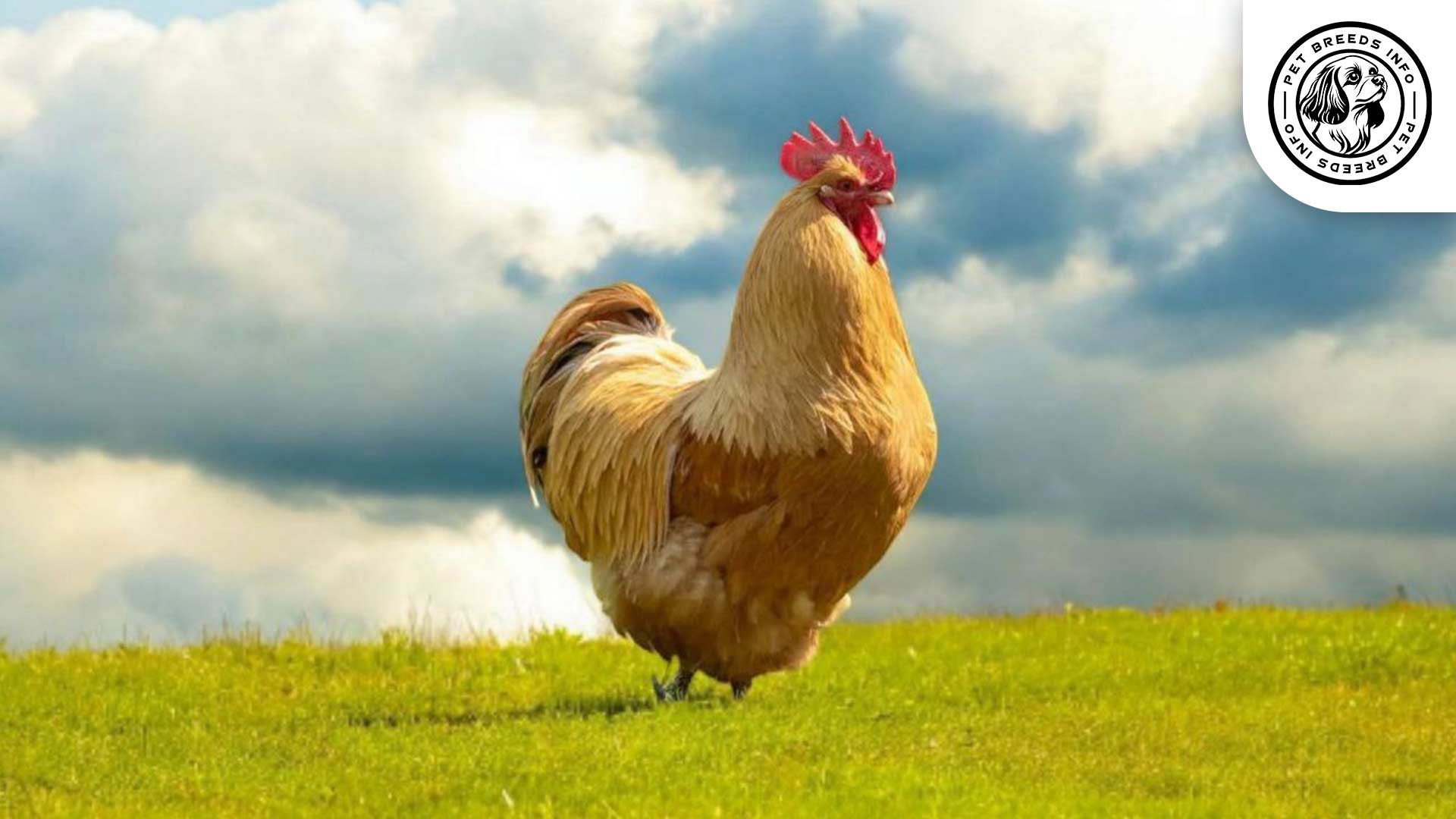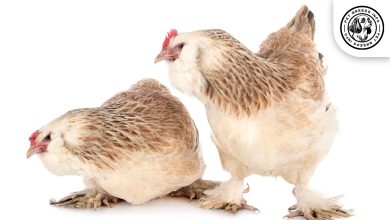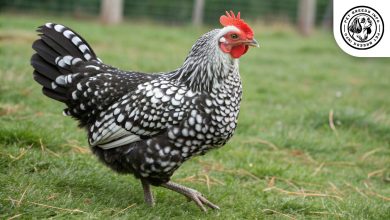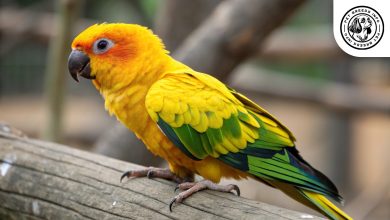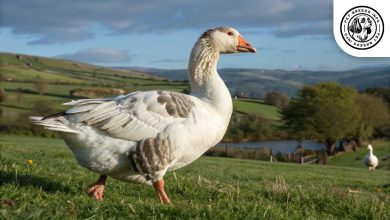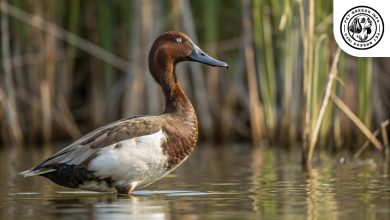Orpington Chicken Breed: Personality, Lifespan, Food & Care
General Introduction of the Breed
The Orpington Chicken is a popular breed known for its friendly nature and excellent egg-laying abilities. It originated in the United Kingdom, specifically in the town of Orpington, Kent. The breed was developed in the late 19th century by William Cook, who aimed to create a dual-purpose bird that could provide both meat and eggs. The Orpington quickly gained popularity for its attractive appearance and docile temperament.
Table of Contents
| Common Name | Orpington Chicken |
| Scientific Name | Gallus gallus domesticus |
| Origin | United Kingdom (Orpington, Kent) |
| Size | Males: 8–10 lbs; Females: 6–8 lbs |
| Lifespan | 5 to 10 years |
| Colors | Buff, Black, White, Blue |
| Talking Ability | Low; gentle clucking |
| Noise Level | Low to moderate |
| Social Behavior | Friendly, calm, and sociable |
Physical Characteristics
Orpington Chickens are large, heavy birds with a broad body and soft, full plumage.
Males typically weigh between 8 to 10 pounds, while females weigh around 6 to 8 pounds.
Their dense feathers give them a rounded appearance, and they come in a range of colors, including black, white, blue, and buff, with Buff Orpingtons being the most common.
They have deep-set eyes that are usually reddish-brown, a medium-sized single comb, and short, rounded wattles. Their legs are clean and typically match their feather color.
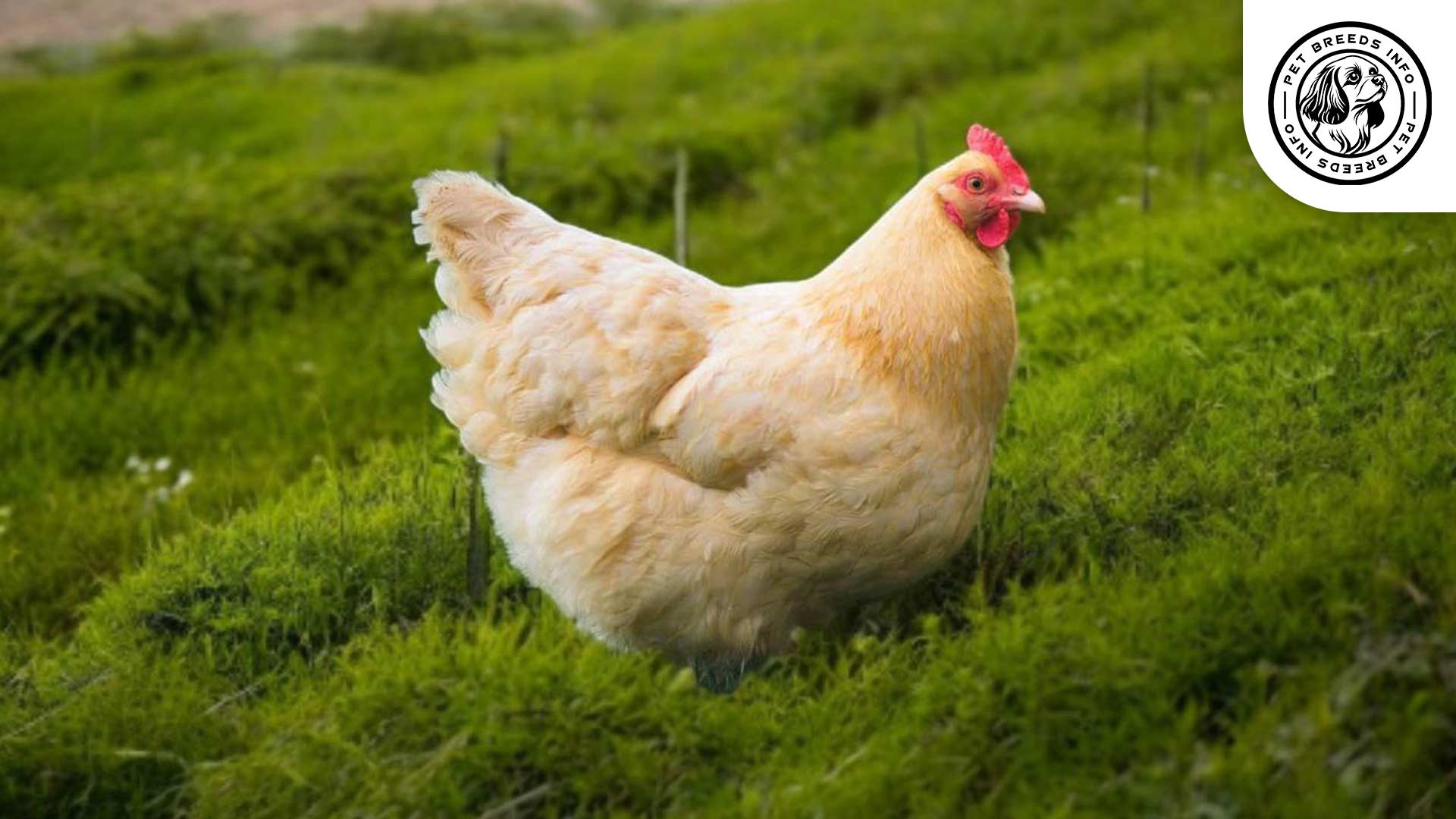
Personality and Temperament
Orpington Chickens are known for their gentle and friendly personality. They are intelligent birds that are easy to tame, making them a favorite among backyard chicken keepers.
They have a calm temperament and do not require excessive exercise. Their docile nature makes them great for families with children.
They are sociable with humans and other chickens and do well in mixed flocks.
Orpingtons are not flighty and prefer to stay on the ground, making them easy to manage in coops and runs.
Read More: Mexican Parrotlet
Care and Maintenance Requirements
Orpington Chickens are relatively low-maintenance but do require space to roam and forage.
They thrive in a backyard setting but should have access to a secure coop for protection from predators.
Due to their dense feathers, they require occasional feather checks for mites and lice.
They do well in colder climates but may struggle in extreme heat due to their thick plumage, so shade and ventilation are important.
Basic hygiene practices, such as regular coop cleaning, occasional nail trimming, and maintaining clean water, are essential for their health.
Diet and Nutrition
Orpington Chickens thrive on a balanced diet consisting of high-quality layer feed, which provides essential nutrients for egg production.
They benefit from fresh vegetables, grains, and occasional protein-rich treats such as mealworms.
Certain foods, such as chocolate, avocado, and salty or moldy scraps, should be avoided as they can be toxic to chickens.
Providing a constant supply of clean water is crucial, and the average portion size depends on the bird’s activity level and environment.
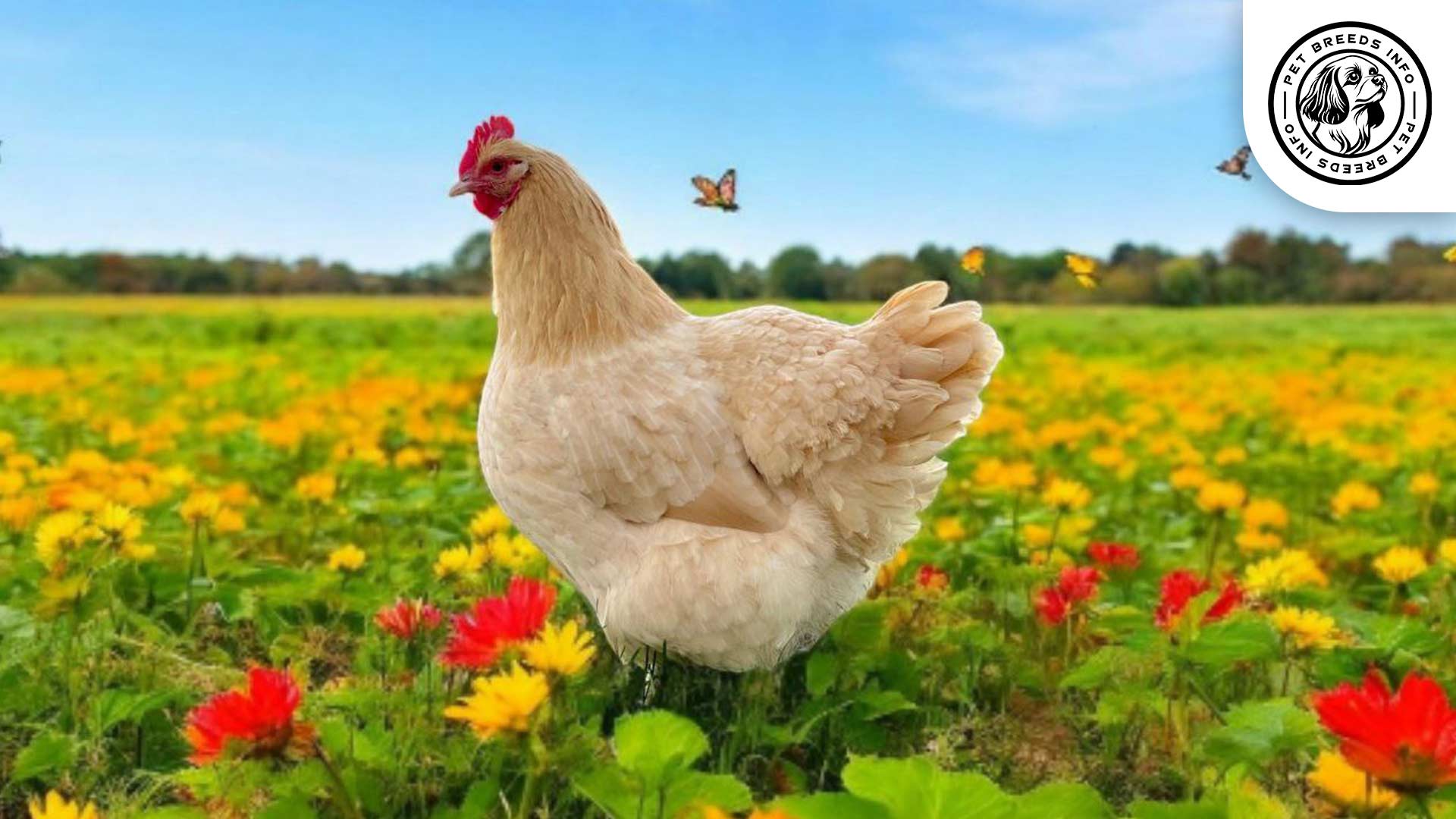
Health and Common Medical Issues
Orpington Chickens are generally hardy but are prone to obesity due to their size and docile nature.
They can develop respiratory issues if kept in poorly ventilated coops.
Parasites such as mites and lice can be a concern, so regular health checks are recommended.
They typically have a lifespan of 5 to 10 years, depending on their care and living conditions.
Standard vaccinations and routine vet check-ups help prevent common poultry diseases.
Read More: Lutino Lovebird
Training and Behavior Management
Orpington Chickens are easy to train and respond well to consistent handling and gentle interactions.
They can be trained to come when called, follow routines, and even recognize their owners.
Early socialization ensures they remain friendly and comfortable with human interaction.
Reward-based reinforcement, such as offering treats, works well when training Orpingtons.
Interaction with Other Animals and Humans
Orpington Chickens are excellent with children due to their calm and friendly nature.
They generally get along well with other chickens and household pets if introduced gradually.
They are ideal for family flocks and backyard farms but can also be a good choice for small-scale poultry keepers.
They tend to be dependent on humans for care and thrive in environments where they receive regular attention and interaction.
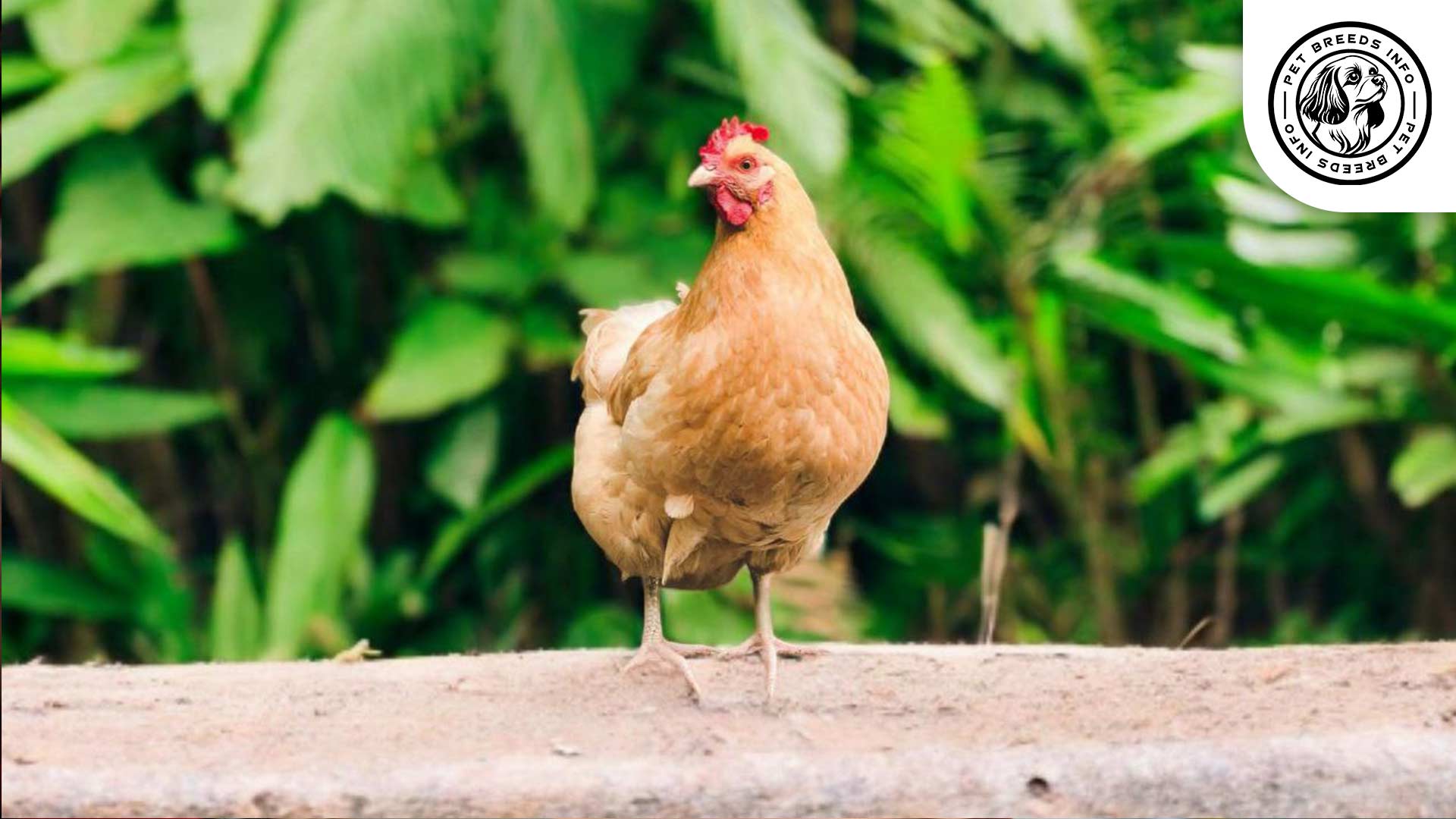
Price and Availability
The price of an Orpington Chicken depends on factors such as age, color variety, and breeder reputation.
Chicks usually cost between $3 to $8 each, while mature birds can cost anywhere from $15 to $30.
When purchasing an Orpington, it’s best to source from reputable hatcheries, breeders, or local chicken farms to ensure healthy birds.
Adoption options may also be available through poultry rescues.
Read More: Duclair Duck
Conclusion and Final Thoughts
Orpington Chickens are an excellent choice for both beginner and experienced chicken keepers due to their docile temperament, ease of care, and great egg-laying abilities.
They are well-suited for backyard environments, provided they have enough space to roam.
Before getting an Orpington, potential owners should consider their space requirements and the time needed to care for them properly.
Overall, their friendly nature and reliable egg production make them a valuable addition to any small farm or backyard flock.
FAQ
What is the temperament of Orpington Chickens?
They are calm, friendly, and perfect for families with children or backyard flocks.
How many eggs do Orpingtons lay?
They’re reliable layers, typically producing 200–280 medium to large brown eggs per year.
Can Orpington Chickens handle cold weather?
Yes, they do well in cooler climates, but need shade and airflow in hot weather.
Are Orpingtons good with other animals?
Yes, they’re sociable and adapt well to mixed flocks and even household pets.
How much space do Orpington Chickens need?
They enjoy room to roam, so provide a secure coop and a safe outdoor area to forage.
